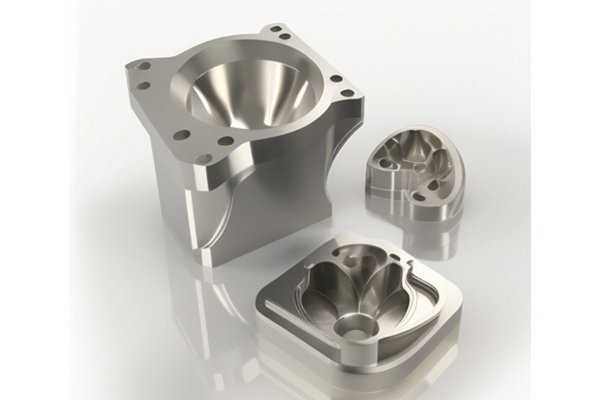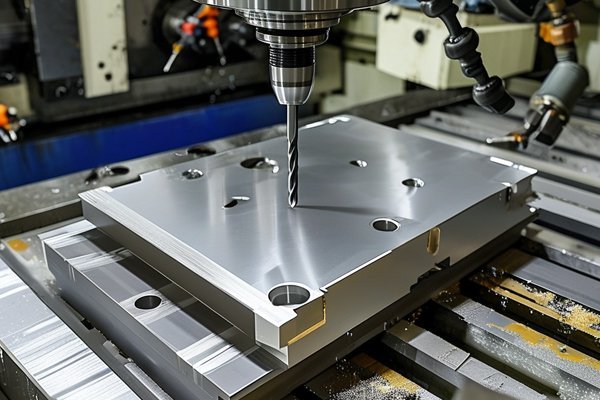*
Did you know that improper machining practices can lead to over 30% of component rejections in the CNC manufacturing industry? This is particularly concerning when dealing with materials like brass, which is favored for its excellent machinability, corrosion resistance, and aesthetic appeal. However, despite these advantages, machining brass can come with its own set of challenges that may ultimately lead to failure if not addressed.
In this comprehensive blog, we will explore the common reasons for failures when CNC machining brass, delve into the root causes of these issues, and provide solutions that manufacturers can implement to improve their processes. By understanding and addressing these challenges, companies can not only minimize waste but also optimize their production capabilities, thus creating a more sustainable and efficient manufacturing environment.
Understanding Brass and Its Properties
Brass is an alloy primarily composed of copper and zinc, although other elements can also be included for enhanced properties. The versatility of brass makes it a popular choice across various industries, including automotive, aerospace, electronics, and plumbing.
Key Properties of Brass
While these properties make brass an attractive choice for manufacturers, understanding the common pitfalls when machining brass is equally important.
Common Reasons for Failure in CNC Machining Brass
Problem: Excessive tool wear is one of the leading causes of machining failures. Hard materials like brass can cause tools to dull faster than anticipated.
Solution: Regularly monitor and replace tools. Opt for high-speed steel (HSS) or carbide drills specifically designed for machining non-ferrous materials. Implementing automatic tool changers can also enhance efficiency, allowing for quick tool replacements.
Problem: An inappropriate feed rate and spindle speed can cause vibrations and issues like surface roughness or even tool breakage.
Solution: Implement a testing phase to find the optimal feed rate and speed. Generally, a high-speed and low feed rate is preferred for brass, helping to achieve a cleaner cut. Utilize CNC simulation software to predict performance before actual machining.
Problem: Inadequate lubrication can lead to overheating and increased friction, causing the material to seize and creating poor-quality finishes.
Solution: Use appropriate cutting fluids designed for brass to minimize heat and friction. Water-soluble oils and synthetic lubricants can be effective. Adjust coolant flows and monitor temperatures during operations to ensure adequate lubrication.
Problem: The geometry of the milling or cutting tool can significantly influence the machining process. Incorrect angles and design can lead to increased cutting forces and poor surface finish.
Solution: Use tools specifically designed for brass machining that feature proper geometry, such as positive rake angles and sharp cutting edges. Always consult the tool manufacturer’s recommendations for the best results.
Problem: CNC machines need precise calibration to function correctly. Poorly calibrated machines can lead to inaccuracies in cutting and poor surface finishes.
Solution: Conduct regular maintenance checks and machine calibrations. Use measuring tools such as laser alignment systems to ensure precision. Implement routine training for staff on the importance of calibrating machinery.

Problem: Securely holding the workpiece is crucial. Any slippage can result in inaccuracies and loss of surface quality.
Solution: Use appropriate fixtures and clamps designed for brass materials. Consider using a vacuum table or magnetic vice if applicable, ensuring the workpiece is securely held throughout the machining process.
Problem: While brass can dissipate heat, excessive machining conditions can lead to heat buildup, affecting both the tool and workpiece integrity.
Solution:* Keep a close eye on machining speeds and coolant application. Utilizing a chip removal system can also help in managing heat. Regularly assessing the temperature of both the tool and material during the process is essential to prevent overheating.
Detailed Solutions to Prevent Brass Machining Failures
Now that we have identified some of the common reasons for failure in CNC machining brass let’s take a deeper look into detailed solutions that can be implemented.
Implement Automation
Automating parts of your machining process can reduce human error and improve repeatability. Automated systems can monitor tool wear and adjust feed rates and speeds in real time based on machine conditions.
Continuous Training
Investing in regular training for operators can dramatically improve machining outcomes. Training programs can cover topics ranging from tool selection to machine maintenance, and they keep your team updated with the latest industry practices.
Quality Assurance Techniques
Develop quality control measures to routinely check the finished products. Implement gauges and 3D measurements to ensure that the dimensions are consistent with project specifications.
Feedback Loop Mechanism
Establish a feedback loop from the production floor back to the design and engineering departments. This will allow for the continuous improvement of CNC programs and techniques, particularly useful for custom jobs.
Investment in High-Quality Tools and Machines
While this may involve higher upfront costs, investing in machines with advanced capabilities and high-quality cutting tools will pay off in the long run through reduced downtime, longer tool life, and improved part quality.
Data-Driven Optimization
Leverage data analytics tools to track machining parameters over time. You can analyze performance and identify trends that may indicate potential failures before they occur.
Collaboration with Material Suppliers
Develop strong working relationships with material suppliers to gain insights into best practices for machining their materials. Suppliers can provide valuable information, including recommended machining techniques that suit specific brass alloys.
In conclusion, understanding the common reasons for failure in CNC machining brass is crucial for manufacturers seeking to improve their production quality and efficiency. From tool wear and feed rates to machine calibration and heat management, implementing the solutions outlined in this blog can help mitigate risks associated with brass machining.
Investing time and resources into refining your machining processes will not only reduce waste and rework but will also enhance your overall production quality. In an industry where precision and efficiency can make or break a company, taking the time to understand and address these challenges is more important than ever.
By continually reviewing these best practices, engaging in ongoing training, and leveraging modern machining technologies, manufacturers can navigate the intricacies of CNC machining brass with confidence. Remember, the ability to adapt and address these challenges will set your business apart in a competitive landscape. Now, take this knowledge and begin improving your CNC machining processes today!






